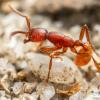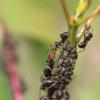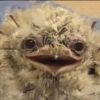I agree with the initiative, if it may be called that, of working to keeping these less 'common' [commonly not collected but may actually be rather common] genera. After working with the Neivamyrmex nigrescens this year and coming across one worker of Cryptopone gilva [no colony as of yet found], three species of Strumigenys and one species of Proceratium, let alone the Stenamma spp that it seems no one is showing much interest in, I currently have three species within this genus, I would love to see others collecting and keeping species of these and other cryptic, hypogeic genera. Minimally a cache of culture and housing data that we could all begin to benefit collectively from would be established. I have already been making notes on the Proceratium and it seems the Strumigenys spp. being kept has been having a steady stream of culture successes and failures being posted. As for the Stenamma spp, I have not noticed any one keeping any in that genus, but the ones I have are very easy to maintain and have small colonies to boot. I would also recommend that Colobopsis mississippiensis be collected and data gathered on its ability or not to transition from Fraxinus americana, its almost exclusive host species, since F. americana is listed as critically endangered due to the emerald ash borer (Agrilus planipennis) with large swaths of the tree disappearing in the C. mississippiensis' distribution range this species could be threatened second hand by the loss of the ash , thus any myrmeculturalists living in southern Tennessee, Alabama, Mississippi areas and states where the borer is just reaching I would encourage to throw their collecting and observational skills into this. As myrmeculturalists we all need to be mindful of conservation and preservation as being part of our endeavor.



















